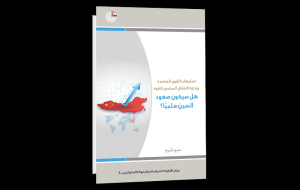Terrorist organizations benefit from identifying and exploiting weaknesses in security, particularly as terror operations, like successful Special Operations missions, rely on maintaining the element of surprise. The Islamic State was able to build and deploy a fleet of bomb-carrying attack drones, which had considerable impact, because the group exploited vulnerabilities in systems that allowed them to source commercial drones and their related components. The group demonstrated an innovative ability to customize drones with low-cost components, transforming commercially available drones into nefarious devices with significant capabilities.
Despite pressure on the Islamic State’s drone program, and its scope significantly curtailed, the unexpected impact the group made with commercial drones has had far-reaching effects. It demonstrated what was possible when those with a sinister agenda make use of some simple engineering techniques. While there are concerns that Islamic State’s drone tactics will evolve to present a greater threat, another issue is that details of the methods they used to modify drones for operational purposes can be found online for others to replicate.
This study examines the nature and structure of the Islamic State’s drone supply chain, in a bid to understand how it acquired its drone fleet and related technology, and developed a drone program. Given the information on their drone purchases, which can be collated from intelligence on the IBACS terrorist network, the investigative work of Conflict Armament Research (CAR), and based on the known number of Islamic State drone missions during 2017, it seems likely the organization also acquired drones through alternative channels.
The availability of commercial drones and the increasingly sophisticated technology that supports their capabilities and performance, presents a complex challenge. These devices, and others like them, which are affordable, relatively easy to access and becoming more advanced, have revolutionized many industries and helped improve the lives of individuals. However, the benefits of the technology and its availability are all too visible. As many have noted, there is a dark side to the commercial availability of the robotics, sensing, communications and navigation technology found in commercial off-the-shelf drones. The technology can be misused and repurposed to develop new weapons of war, at scale.
The study demonstrates how the emergence of hybrid warfare, which focuses on combining low-cost equipment with more advanced technology, requires the development of robust public-private sector partnerships to effectively manage, track and counter the threats from hybrid weapons that depend on commercial systems.
Terrorist groups and hostile state actors will inevitably identify weaknesses in supply chains. But that does not mean we should not strive to tighten controls on the purchase of items that can be repurposed in this way, such as the drones, surveillance and jamming devices that helped Islamic State strengthen its defensive and offensive capacities.
This study also highlights how investigations into some of the suspicious transactions made by the IBACS network could have identified those managing and acting on behalf of the network. Agencies involved could have conducted better due diligence of the network’s transactions, which included shipping equipment to warzones. Investigators could also have called on other governments or neutral third parties for support. Also effective in these cases is the use of automated searches for suspicious keywords and questionable patterns of behavior (similar to those used in anti-money laundering and financial compliance). These types of investigations are driven by smart systems that can evaluate purchase data across different types of transaction management software, helping to remove barriers to detection.
Another way to address vulnerabilities surrounding dual-use devices is to work with industry to strengthen ways to cost-effectively track commercial drones, and their packaging, as well as to retrace the movements of devices and components recovered from conflict zones. This would help shorten investigative time periods, making it easier for entities like CAR to match specific drones or devices with their dealers.
Lastly, given the sizeable funds spent by the US, and other nations, to counter hostile drones of all types, it seems reasonable that greater attention and resources should be focused on efforts to prevent these types of multi-purpose materials from reaching conflict zones. More robust investigative procedures are needed in order to map out supply chain networks, track equipment, like drones found in the field, so that existing procurement channels can be more rapidly closed.
About the Author:
Don Rassler is Assistant Professor, Department of Social Sciences and Director of Strategic Initiatives at the Combating Terrorism Center, West Point Military Academy, US.
Publisher: Emirates Center for Strategic Studies and Research (ECSSR)
Year of Publication: 2019 [In Arabic]













